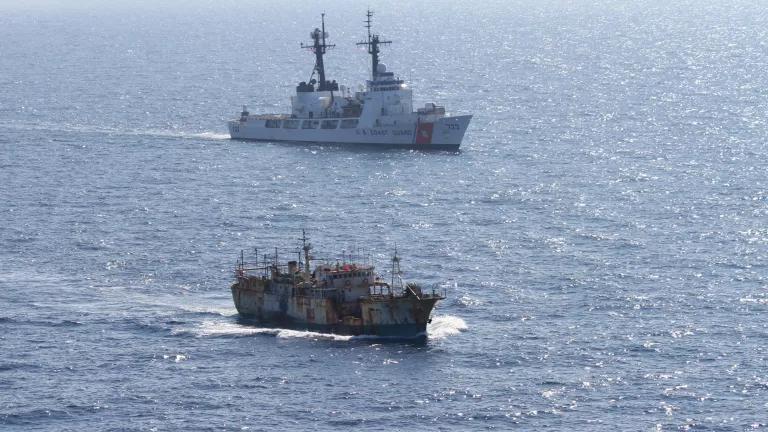Suffering from Entanglements Is the Norm for Large Whales
Recent findings have uncovered the gruesome fact that over half of some species of large whales have been entangled at one point in their lives.

Aerial view of the body of a dead humpback whale entangled in fishing line in the Gulf of Maine.
Entanglement in fishing gear is a dire threat for large whales. Recent findings have uncovered the gruesome fact that over half of some species of large whales have been entangled at one point in their lives.
Entanglement in fishing gear continues to be a leading cause of death for large whales across the United States. On the East Coast, entanglement continues to drive the North Atlantic right whale to extinction. On the West Coast, 17 whales were reported to be ensnared in U.S. commercial fishing gear in 2020. Three of these whales had already died.
Entangled whales that are seen and recorded are just a tiny fraction of the real number of entanglements that happen further at sea. The vast majority of entanglements are undetected and even fewer are reported - meaning that for every entangled whale reported, many more may be struggling against the weight of their ropes. In one study, reporting rates were estimated at 5.7 percent for the Gulf of Maine between the years of 2003 - 2006.
Looking at scarring rates provides a deeper understanding of just how many whales become entangled at some point in their lives. Scarring occurs when a rope chafes into the animal’s skin as they struggle to break free, leaving deep gouges and sometimes permanent marks.

The Science Tells a Grim Story
Study after study shows the dire threat that thousands of large whales have faced in the past decades off the coasts of North America:
- Gulf of St. Lawrence, Canada → 85.7% of humpback whales, between 40.8 and 59.9% of blue whales, and between 41.3 and 54.7% of fin whales exhibit scars from previous entanglement events.
- Southeast Alaska → 71% of humpback whales have been non-lethally entangled at some point in their lives.
- U.S. East Coast and Atlantic Canada → 85% of North Atlantic right whales bear scars from being entangled in gear, and over half bear scars of being entangled two or more times.
- Gulf of Maine → 64.9% of humpback whales showed scars from previous entanglement events.

More than half of many large whale species and stocks in U.S. and Canadian waters show signs of entanglement. In some cases, almost all whales of a species or stock have been entangled at least once.
The implications of this statistic are gut-wrenching. Imagine seeing most of your friends, family, neighbors, and colleagues marked with horrendous scars from their battle for life against ropes. We cannot begin to imagine the physical and emotional toll this must take on the animal, but we do know that whales that are or have been entangled are malnourished, in poor health, and are less likely to be able to successfully reproduce. And this is happening to thousands of charismatic and intelligent animals all along our coastline and internationally, many losing the battle for life far below the ocean’s surface.
Whales that are ill and fatigued from dragging around fishing gear are also more susceptible to non-entanglement stressors like ocean noise, vessel strikes, or scarcity of food due to climate change.
The time to take action is now. We cannot continue to downplay the effects that fishing gear has on whales and other marine life. The evidence is clear. Entanglements kill and impact far too many individuals to turn a blind eye.
We must work towards solutions that eliminate any chance of entanglement.
Transitioning traditional line and buoy fishing gear to ropeless fishing systems is one solution that can accomplish this goal while keeping fishermen on the water. This technology has the potential to protect whale species all along the United States’ coast - and across the world. To learn more about ropeless fishing gear check out our complimentary blog on “How Ropeless Gear will Help End Whale Entanglements”.



